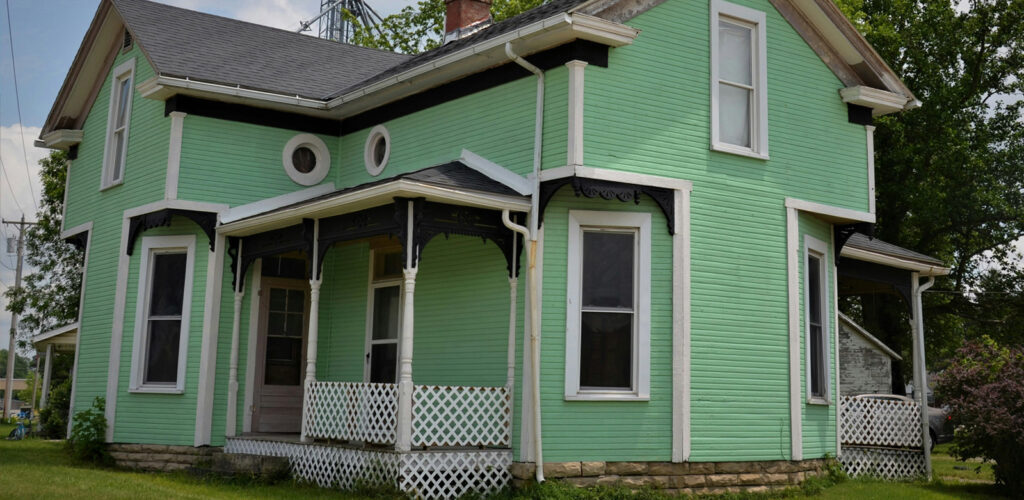How to Know if a House Has Lead Paint
Key Takeaways
- Homes built before 1978 should be presumed to contain lead paint until tested.
- Only EPA-recognized test kits or certified inspectors can confirm the presence of lead.
- Do not dry-sand, scrape, or power wash suspect paint. Always use an EPA-certified abatement professional.
- After remediation, hire a professional painting crew experienced in lead-safe repainting to protect your family and investment.
If your home was built before 1978 – the year the U.S. banned residential lead-based paint – it may still contain lead. Many houses in Southern Oregon communities such as Medford, Grants Pass, and Eagle Point, and nearby areas fall into this category. Lead paint isn’t just an old-house quirk; it’s a serious health risk. This guide explains how to identify potential hazards and the safest way to confirm the presence of lead.
Why Lead Paint Matters
Lead dust or chips from deteriorating paint can cause developmental delays in children and serious issues such as high blood pressure and kidney problems in adults (CDC). The greatest danger comes when old paint is disturbed—during remodeling, sanding, or even everyday wear—releasing invisible particles into the air.
How to Know if Your House Has Lead Paint
1: Check the Age and Records of Your Home
Before you inspect any walls, start with paperwork. Look up your home’s construction year in county property records, building permits, or tax documents.
- Homes built before 1978 should be presumed to contain lead paint unless testing proves otherwise (EPA).
- If your house was built between 1960 and 1978, lead paint use declined, but it was still common.
2: Look for Visual Clues—Carefully
A visual check can provide hints, but don’t scrape or sand paint to investigate, which can release dangerous dust.
- “Alligatoring”: deep cracks that resemble reptile skin.
- Peeling, chalking, or bubbling paint on siding, trim, or windows.
- Multiple layers of paint are visible along edges or where surfaces rub together.
These signs suggest aging paint, but only professional testing can confirm lead (National Center for Healthy Housing).
3: Use Certified Testing Methods
To know for sure, use an EPA-recognized method:
- Lead test kits approved by the EPA offer quick screening; the swab changes color if lead is present.
- X-ray fluorescence (XRF) analysis by a licensed inspector provides instant, lab-grade results.
- Paint chip sampling sent to an accredited laboratory offers definitive confirmation.
For reliable results, the EPA and Oregon Health Authority recommend hiring a certified professional rather than relying solely on DIY kits.
4: If Lead Is Found
Never attempt to remove lead paint from your house by yourself. Instead:
- Hire an EPA-certified Renovation, Repair, and Painting (RRP) contractor for abatement or safe encapsulation.
- Ensure the containment and proper disposal of dust and debris in accordance with federal and Oregon state guidelines (OHA Lead-Safe Renovation).
- After remediation, surfaces can be safely repainted with modern, low-VOC coatings.
Professional Repainting (After Lead Abatement)
Once a certified specialist has addressed the lead, Pacific Home Painting can restore your home’s exterior with premium, low-VOC paints designed to handle Southern Oregon’s wet winters and hot summers. Whether you need Grants Pass house painting, Rogue River house painting, or service anywhere else in the Rogue Valley, we follow all lead-safe work practices to ensure a healthy, long-lasting finish. We use top-quality products that resist fading and peeling, giving your home a fresh look and reliable protection for years to come.
FAQs
You can’t. Age and peeling paint are clues, but only an EPA-recognized test or professional inspection provides confirmation.
Generally, intact and well-sealed lead paint poses less risk. Problems arise when it peels or is disturbed.
No. The EPA and OHA strongly advise against DIY removal. Improper methods create hazardous dust.
Yes. Activities like sanding, cutting, or demolition can release large amounts of lead dust. Use RRP-certified contractors for any work on pre-1978 homes.
